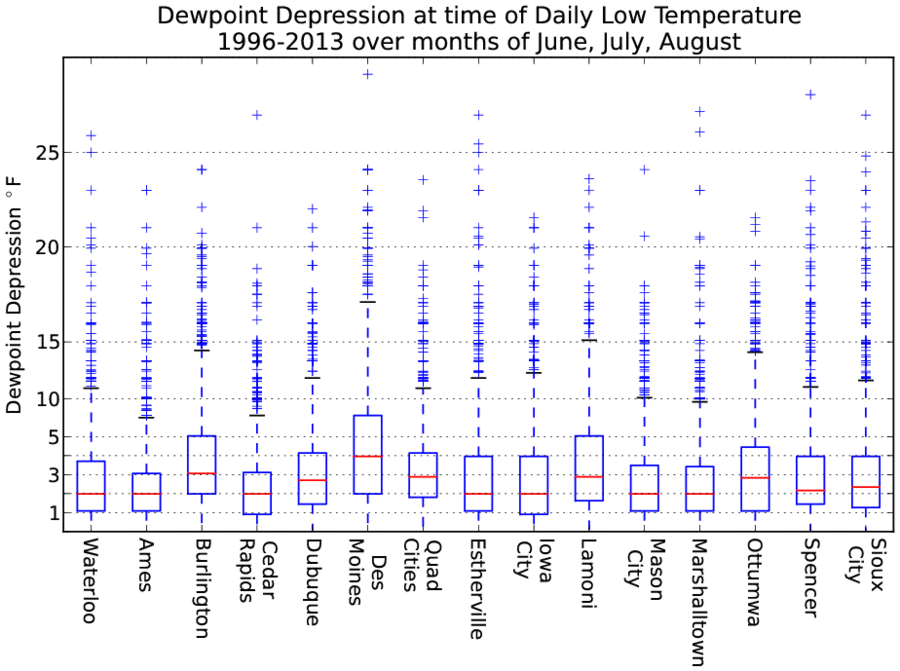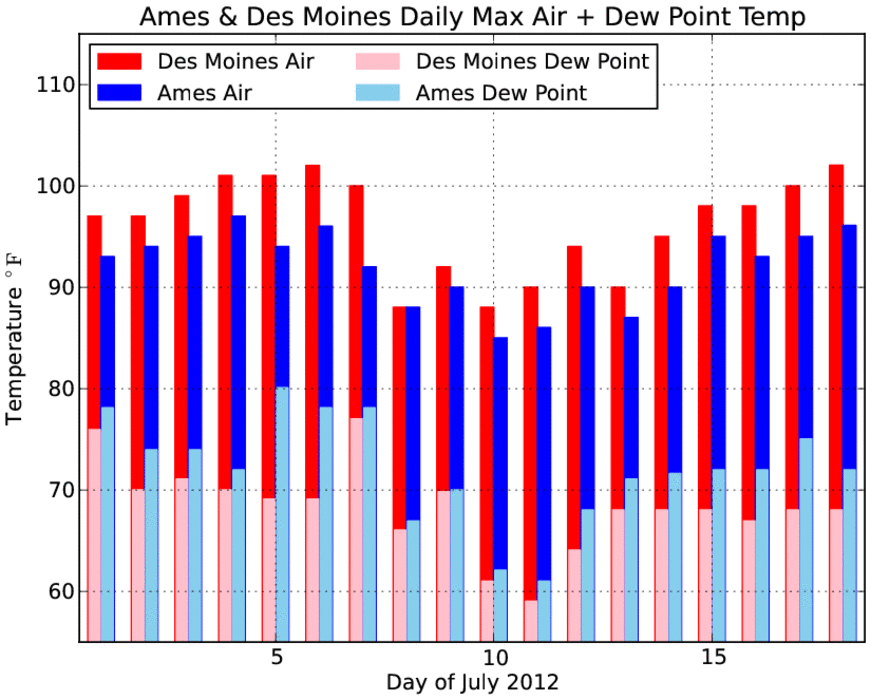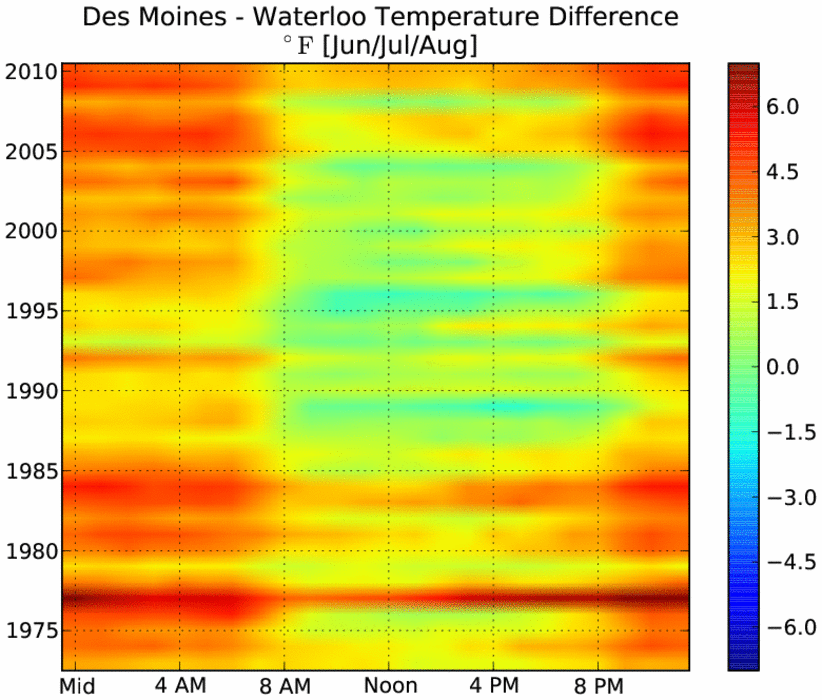Past IEM Features tagged: heatisland
Dewpoint Depression
22 Aug 2013 05:46 AMYesterday's feature looked at the afternoon dew point being an indicator of the next day's low temperature. The theory being that the air temperature would cool off to the dew point temperature and thus be the low temperature. Today's feature looks at the distribution of dewpoint depression at the time of the daily low temperature for each of the ASOS sites in the state. The dewpoint depression is simply the difference between the air and dewpoint temperature. Differences between sites are likely due to micro-climate effects as each ASOS has different surroundings which include soil types, vegetation, and amount of urban area / concrete around it. The chart shows a large difference between Ames and Des Moines with the median dewpoint depression two degrees less at Ames. The first guess explanation for this difference is the larger urban heat island effect at Des Moines, which would tend to keep the temperature higher and further away from the dewpoint than surrounding locations. Also, the Ames ASOS is located in a topographic depression which would promote cooler temperatures.
Additional plots: same plot for high temperatures, Ames weekly dewpoint depression, and weekly for Des Moines.
Voting:
Good: 123
Bad: 12
Tags: dewpoint asos heatisland
Ames v Des Moines
19 Jul 2012 05:46 AMWhile the thermometer hit 103 degrees at the official observation site in Des Moines (the airport ASOS), it was 6 degrees cooler a handful of miles north in Ames as it only reported a high temperature of 97. The featured chart shows the daily maximum temperature from these two sites for July along with the maximum reported dew point for the day. Why is Des Moines always warmer than Ames and Ames not having reached 100 degrees yet? Location is everything. The Des Moines airport is surrounded by an urban landscape on most sides, while the Ames site has mostly corn and soybean fields nearby. Agricultural areas promote higher humidities due to crop transpiration, while urban areas are comparatively drier. This difference is clear from the difference in maximum dew points. The micro-climate around the Ames site is much more humid, which means it takes more energy to heat the air. So for the same incoming radiation, it will take more energy to raise the temperature one degree at Ames versus Des Moines. There is also a general urban heat island effect that happens moreso in Des Moines than Ames, due to intensity of the urban landscape promoting warmer overnight temperatures (all of the buildings and concrete hold heat better than vegetation and topsoil).
Voting:
Good: 94
Bad: 16
Tags: heatisland
Differences in cooling rates
10 Apr 2012 05:53 AMThe featured chart is an attempt to illustrate differences in over night cooling rates by showing a composite profile of temperature for a three hour period prior to reaching a freezing temperature. The airport weather sensor in Des Moines is in a very urban area, while the Waterloo sensor is on the edge of town. The slope of these two lines is slightly different showing a faster cooling rate for Waterloo. This is an illustration of the "heat island" effect that is caused by having lots of heat retaining buildings and pavement nearby the weather sensor.
Voting:
Good: 16
Bad: 3
Tags: heatisland
Fall Heat Islands
07 Sep 2011 06:00 AMThe past two mornings have seen rather chilly temperatures with record lows set in Mason City and Ottumwa. The featured map presents the lowest temperature reported since the first of August. While some locations have dipped into the 30s, the major urban centers of Des Moines, Council Bluffs, and Iowa City have barely breached 50 degrees. This is a classic urban heat island effect of having lots of warm buildings and concrete slowing the rate of cooling overnight.
Voting:
Good: 15
Bad: 3
Tags: heatisland
Warm nights in the city
14 Oct 2010 03:07 AMThe featured chart displays the hourly average temperature difference by year between Des Moines and Waterloo. The chart nicely shows the effect of having a weather sensor in an urban area (Des Moines) versus a more rural one (waterloo). Notice how Des Moines is much warmer during the night time than during the daytime. This is probably a result of the Urban Heat Island Effect. If you are into warm nights, living in Des Moines is your best bet in Iowa.
Voting:
Good: 30
Bad: 8
Tags: heatisland





